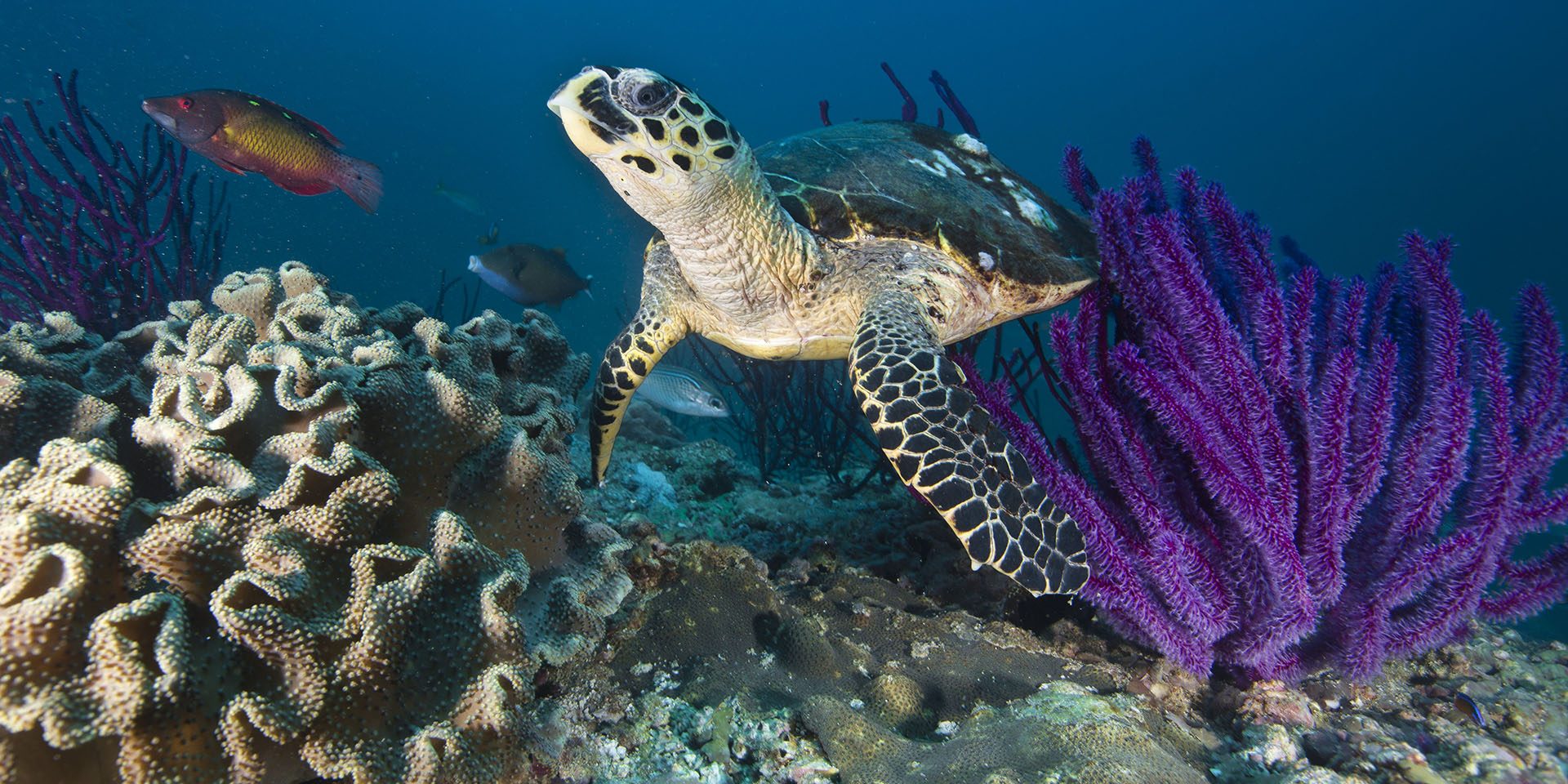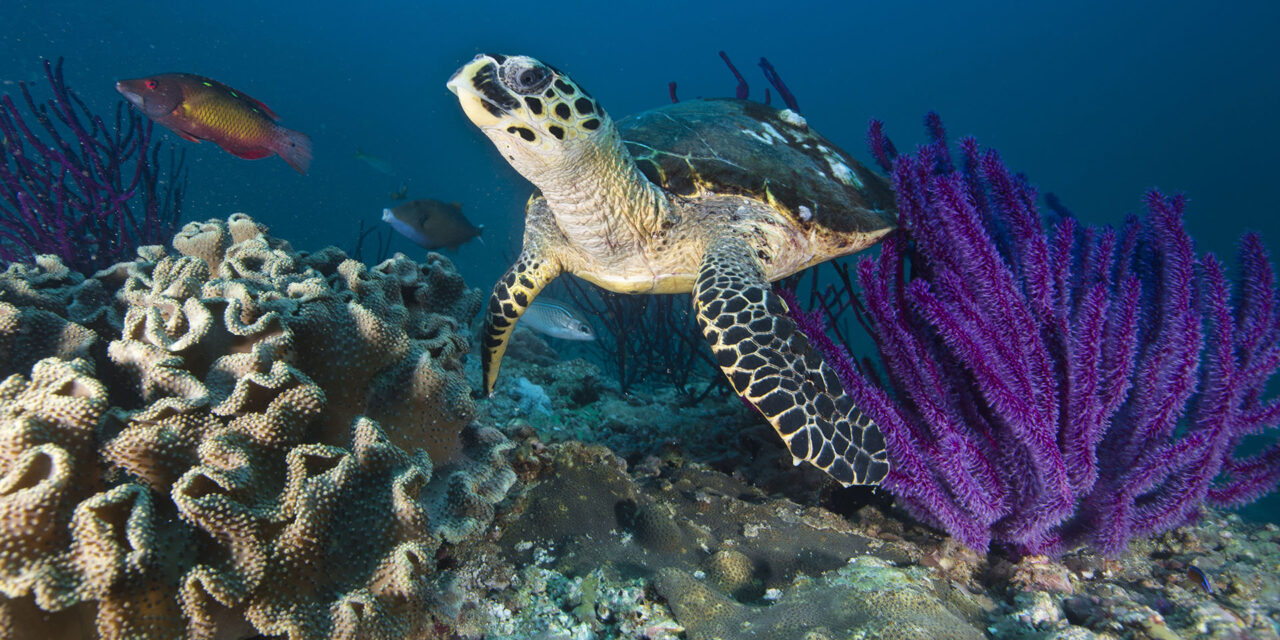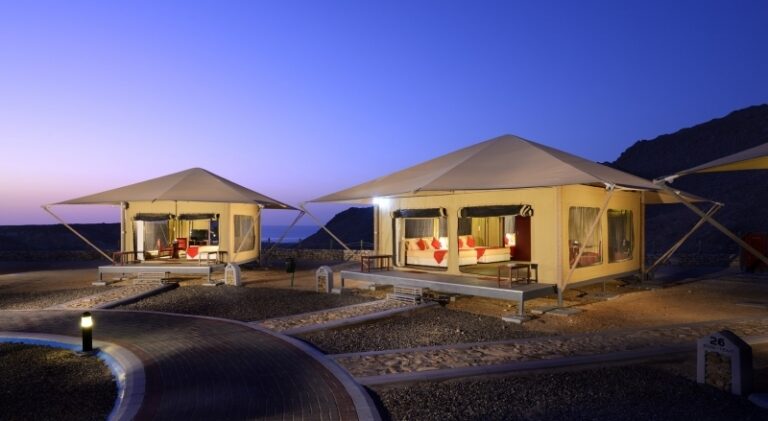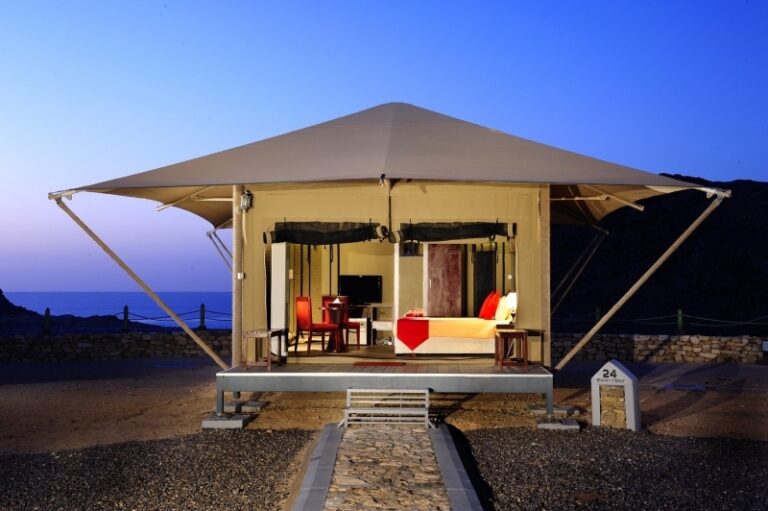WRITTEN BY
Tyler Roney
PUBLISHED ON
January 4, 2018
LOCATION
Oman
The resorts are fit for royalty and the deserts are filled with every kind of luxury, but it’s the expansive wildlife that takes most visitors by surprise. Indeed, the seas of Oman are some of the richest in the Middle East, and with an eye to conservation as much as travel, the shores and waters of Oman are teaming with life. For the casual wildlife enthusiast, these simple Omani wildlife pleasures are easy and exciting.
Turtles at Ras al Jinz
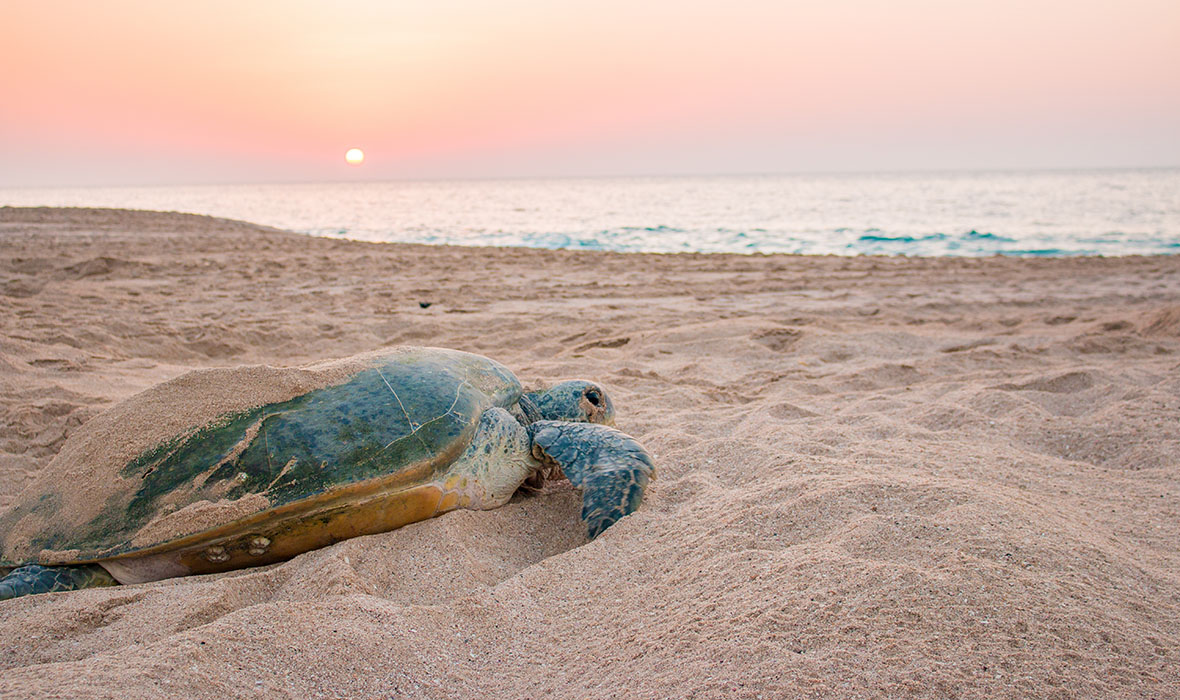
ABOVE: At turtle in the morning at Ras al Jinz.
Among the sea turtle sanctuaries of the world, Ras al Jinz is unique. Surrounded by desert and mountain greens, this area is the nesting place of the endangered green turtle – a place where a select few can watch these gigantic sea creatures lay, nest, and escape to the safety of the sea, best experienced at night or in the early morning.
ABOVE: Video from Oman Travel Guide.
Few visitors are permitted in this pristine sanctuary, so it is extremely important for travelers to book ahead, the best season being from May to September. Viewings are often best done at night or in the early morning.
ABOVE: Tents, rooms, and museum at Ras al Jinz.
In addition to the pristine beach of baby turtles and fascinating surroundings, the sanctuary boasts a museum and surprisingly lush accommodations. While there, guests will no doubt want to make use of the “Luxury Eco-Tents.”
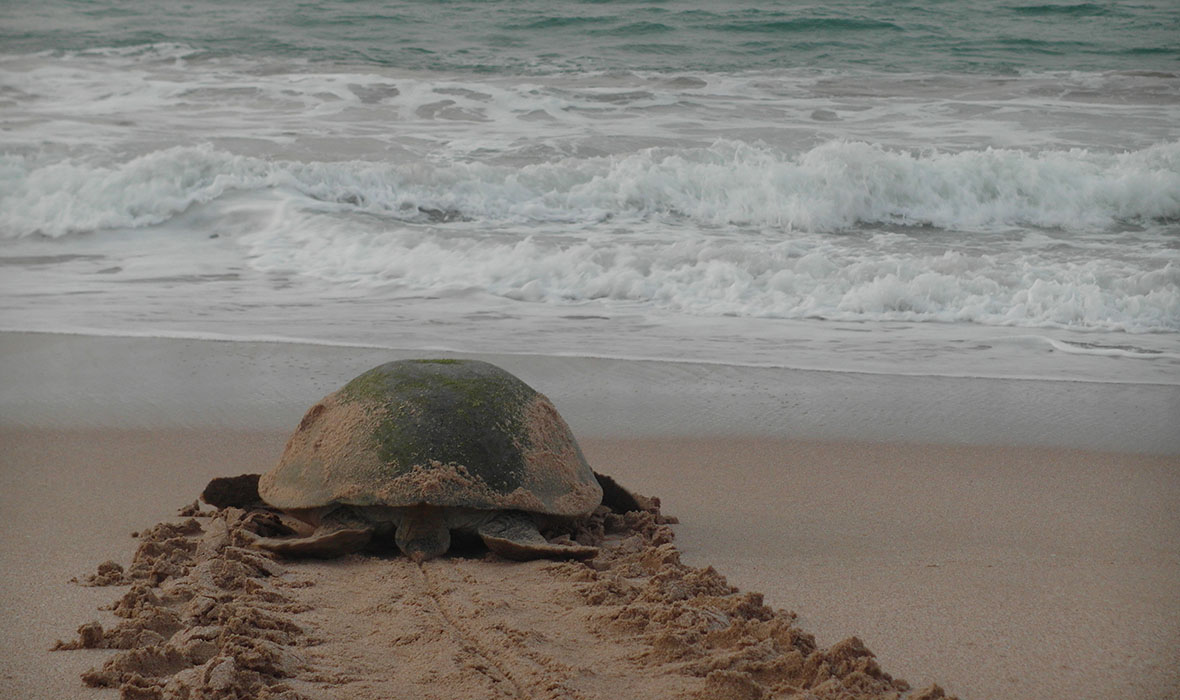
ABOVE: Green turtle travels back into the ocean after laying eggs at Ras al Jinz.
For those traveling with the family, the “Carapace Rooms” may be more suitable. The accommodations here are a practice in respobsible tourism, allowing guests to visit with the turtles and have a minimal impact. The 120-square kilometer protected area and 45-kilometer coastline of Ras al Jinz is also home to 6,000-year-old archaeological sites.
Dolphin Watching
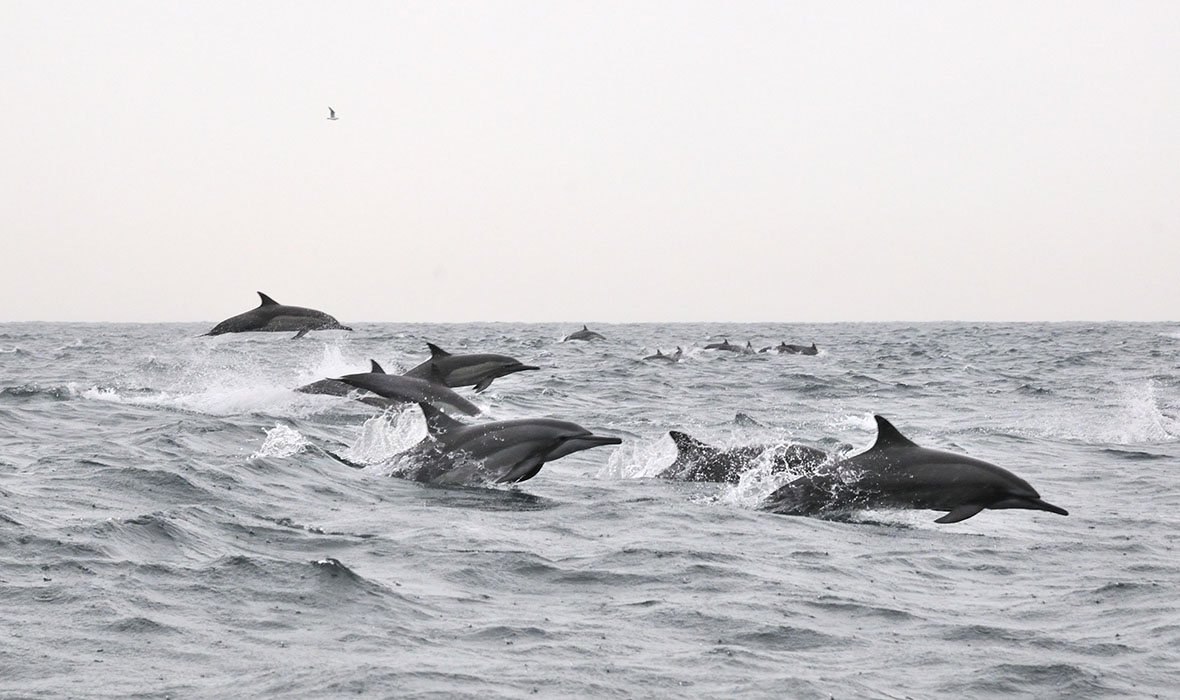
ABOVE: Dolphins in the Gulf of Oman.
The development of Muscat can, at times, seem very lifeless indeed in the dry season. But, at sea there is no shortage of life. One of the simplest wildlife experiences to have after landing in the travel haven of Muscat is to get on a boat and look for the sea’s friendliest inhabitants: dolphins.
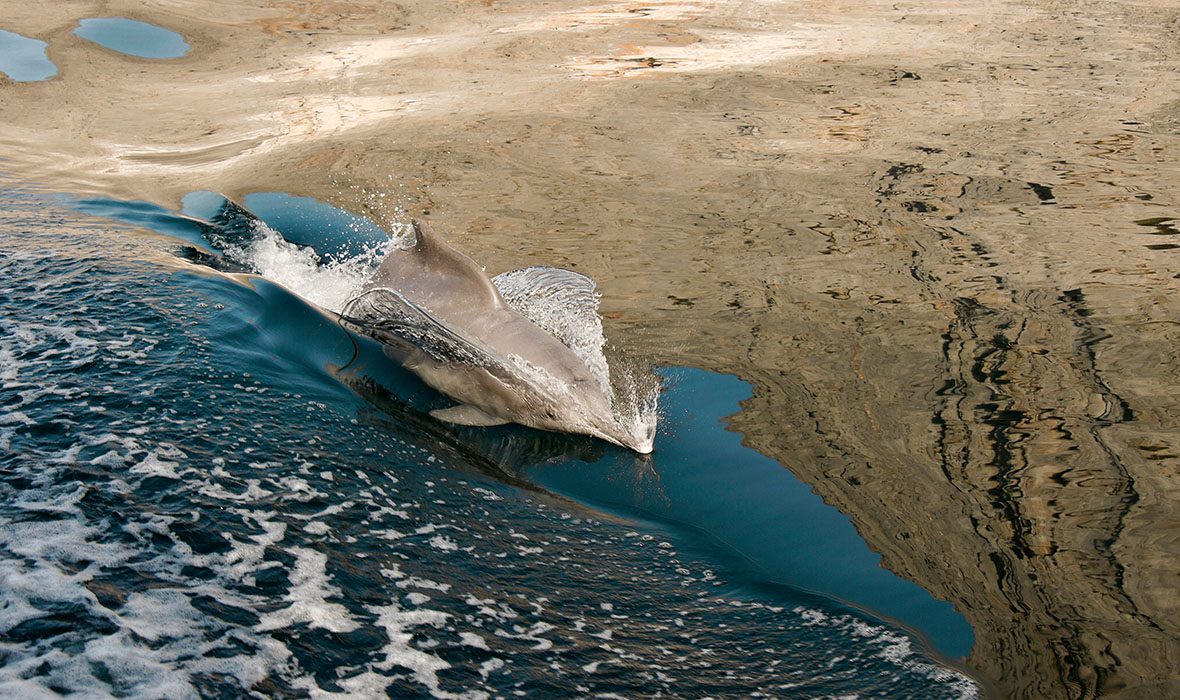
ABOVE: A dolphin surfs in a boat’s wake, with the dry Omani mountains reflected in the water.
The warm seas of the Gulf of Oman have bred an abundance of life year round, and dolphins from around the world come to feed there. Muscat and Musandam are most famous for their dolphin watching, with pods of several dozen appearing at once. However, so rich are the seas around Oman that dolphin watching can be seen everywhere from Dhofar to Khasab. In Khasab, for example, there are tours where one might take a dhow – or a reasonable facsimile thereof – on their dolphin watching journey.
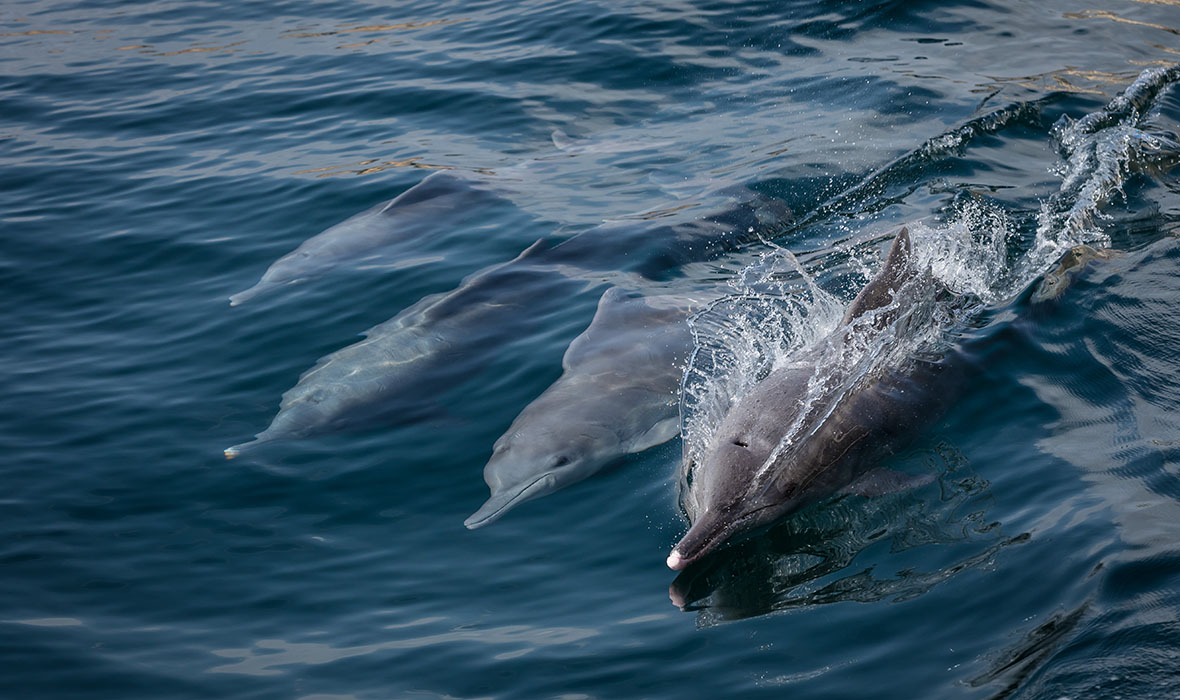
It is also important to note that, depending on the season, some of these whale watching tours double as whale watching tours.
The dolphins aren’t the only ones that travel to these waters for their rich sea life; killer whales, humpbacks, and even sperm whales make their way into the Gulf of Oman, and lucky spotters will catch them at play. The humpback whales patrolling the Omani sea – known for their playfulness – are genetically distinct from other humpbacks.
Snorkeling the Daymaniyat Islands
ABOVE: Drone video of the Daymaniyat Islands. (Royal Lens Studio)
The diving in Oman isn’t exactly a secret, but there are few other areas so filled with conveniently accessible life than the Daymaniyat Islands. Ignoring the perfect white-sand beaches, the warm waters here play host to turtles, groupers, live coral, and even whale sharks.
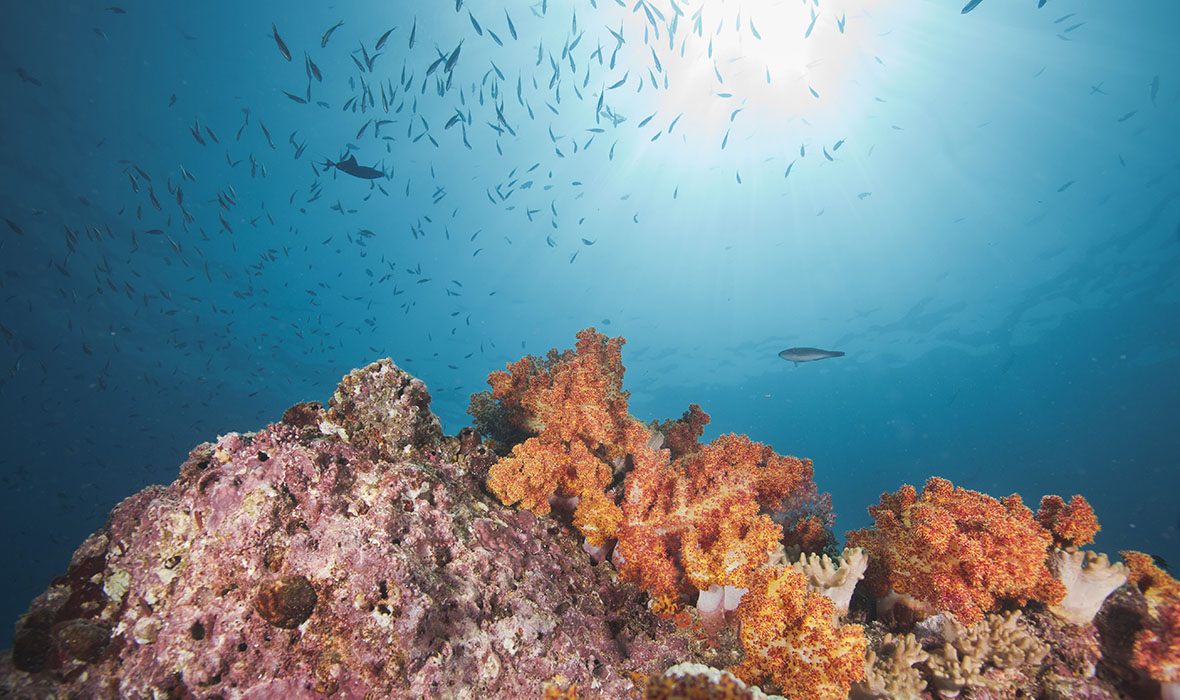
ABOVE: Healthy soft coral off the Daymaniyat Islands.
Most importantly, the shallow waters on the Daymaniyat Islands mean that you don’t need to be a diver to see some of the region’s most impressive underwater wildlife. Snorkelers will find coral to rival much of what can be found in Southeast Asia (though less of it, obviously), and the basking whale sharks are a rare but fascinating treat.
Found just 18 kilometers off the Barka coast and less than an hour from Muscat, the Al-Dimaniyat Islands Nature Reserve is composed of nine idyllic islands, surrounded by nesting sea turtles and migratory birds. Overall, there are more than 22 diving and snorkeling sites. Camping on the islands is permitted between October and February.

